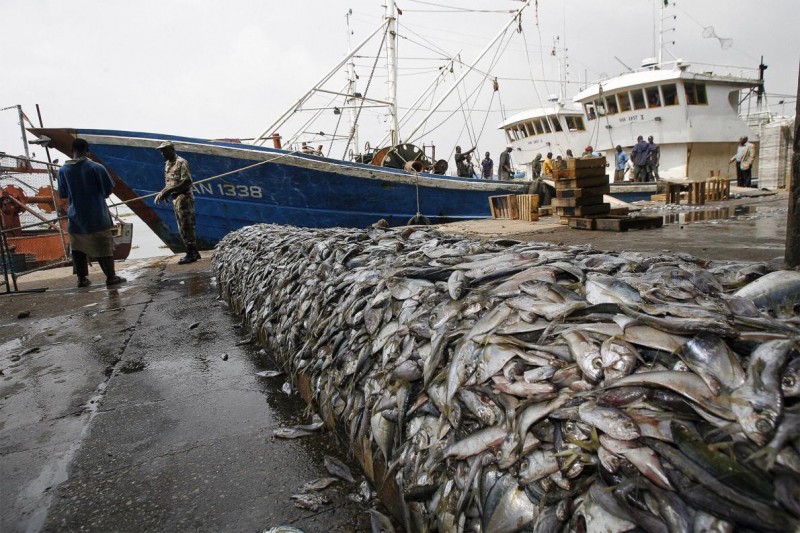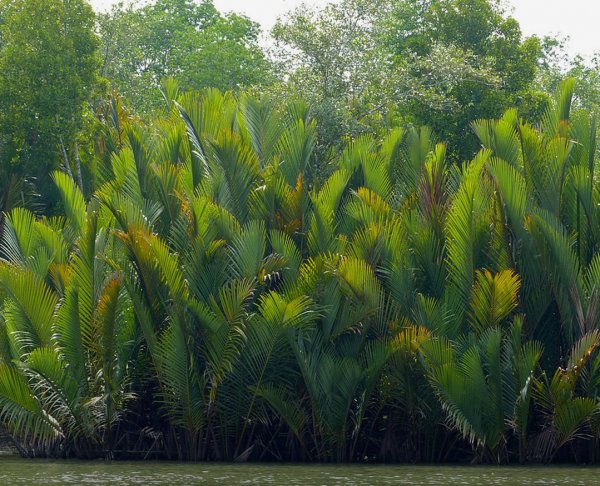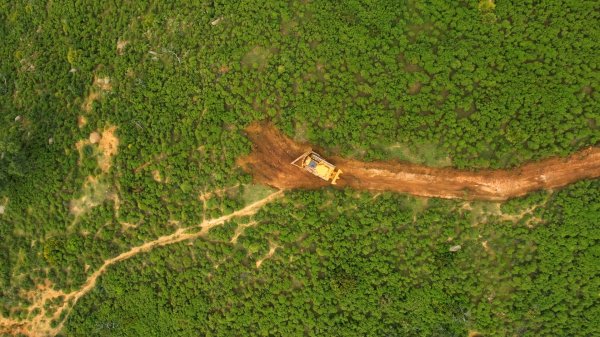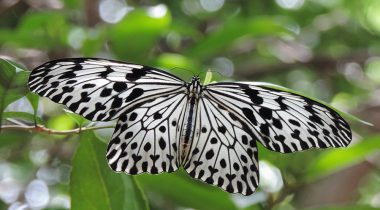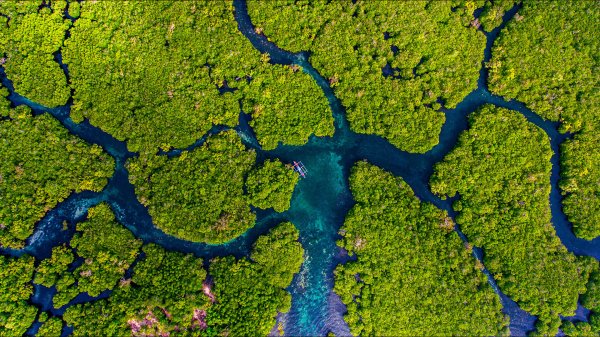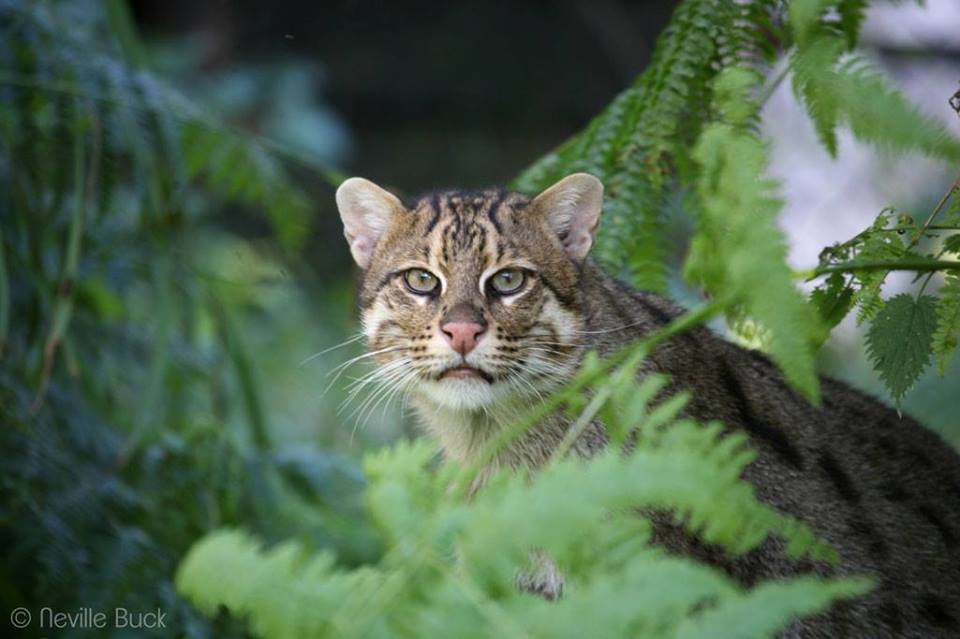
In the jungle, the mighty jungle… four felines of varying shapes and sizes sleep tonight.
Yes, you read that right – between the leopard, fishing cat, rusty-spotted cat, and jungle cat, Sri Lanka is home to four distinct species of wild cats, three of whom are all too often overshadowed by the bigger, more widely recognised leopard.
Each of these wild cats are, however, equally important, with some being subspecies that are endemic to Sri Lanka, and others contributing significantly to the world population.
Sri Lankan Leopard (Panthera pardus kotiya)
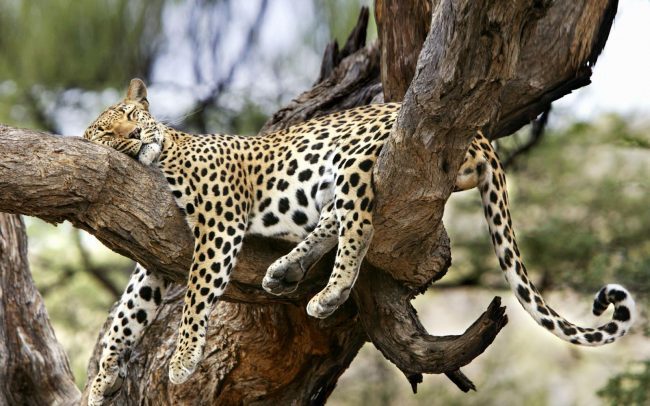
The Sri Lankan leopard is, possibly, the largest subspecies of leopard in the world. Image Credit: surfteamsrilanka.com
First distinguished by the zoologist Deraniyagala in 1956, Panthera pardus kotiya is a subspecies of leopard native to Sri Lanka, and the only big cat still inhabiting the island.
The Sri Lankan leopard is capable of weighing up to 90 kg, and rivals the Persian leopard as the largest subspecies of leopard in the world ‒ this is due to the fact that, unlike most leopard subspecies, which coexist with larger wild cats such as lions and tigers, the Sri Lankan leopard is the largest predator in the areas it inhabits. This makes it possible for it to tackle larger prey, and grow to a considerable size.
Much like the other subspecies, the Sri Lankan leopard is a solitary hunter, with the only exception to this rule occurring in females with young.
The wild population, which is estimated to comprise 700 to 950 individuals, is threatened by habitat loss, poaching, and human-leopard contact. This led to their being listed as “endangered” on the National Red List in 2012, as well as in the IUCN Red List in 2008 ‒ a status that has not been reassessed since.
Fishing Cat (Prionailurus viverrinus)
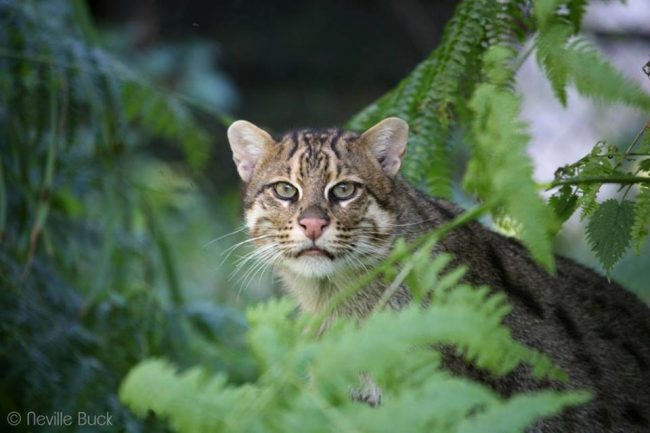
Extensive research is being conducted with regard to the fishing cat, primarily by two organisations – the Urban Fishing Cat Conservation Project, and the Save Fishing Cats Conservation Project. Image Credit: Neville Buck
Mistaken for “small” or “baby” leopards by city-dwellers for decades, the fishing cat ‒ called the handun diviya in Sinhalese ‒ is a medium-sized wild cat native to South and Southeast Asia. Roughly about twice the size of a housecat, it is the largest cat belonging to the Prionailurus genus.
As its name suggests, the fishing cat’s diet consists primarily of fish, and it is for this reason that its population is concentrated in wetland habitats, such as marshes and swamps. Increasing loss of habitat has, however, forced the fishing cat to adapt to urban environments. The Urban Fishing Cat Conservation Project, founded by Anya Ratnayaka, looks to better understand this trend, and to educate the public on the species so that more informed care is taken to protect this species and its declining habitats.
Meanwhile, Ashan Thudugala’s Save Fishing Cats conservation project focuses on conserving the fishing cats in the hill country and north central provinces, and does so through field research, rehabilitation programmes, threat reduction practices, and public awareness programmes.
The fishing cat was listed as “endangered” in the National Red List for 2012, and “vulnerable” on the IUCN Red List for 2016 – the same list that identified Sri Lanka as a fishing cat stronghold.
Jungle Cat (Felis chaus kelaarti)
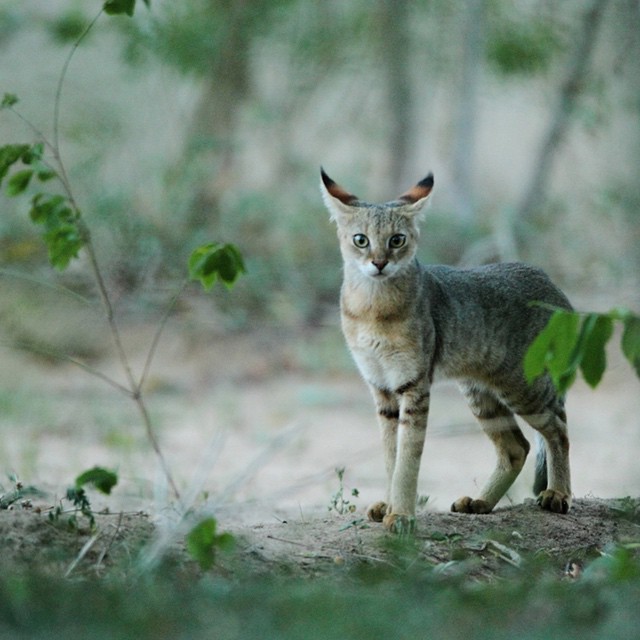
The Jungle Cat is the closest you’ll get to seeing a housecat in the wild. Image Credit: Wild Cats Sri Lanka
Almost twice the size of your average housecat, and bearing a striking resemblance to it, Felis chaus kelaarti ‒ known colloquially as the wal-balala or kalaa-balala ‒ is a subspecies of jungle cat found in Sri Lanka and parts of Southern India.
The first written record of the subspecies can be found in a book published by the Ceylonese naturalist Edward Frederick Kelaart 1852, but it was only in the 1930s, following extensive research and based on differences in fur length and colour, that Felis chaus kelaarti was identified as its own subspecies by the naturalist Pocock.
Despite its name, the jungle cat favours the wetlands over rainforests and woodlands, and is often sighted near human settlements.
Unlike the rest of the cats on this list, the jungle cat is classified under “least concern” by the IUCN. It was, however, classified as “near threatened” in the National Red List for 2012, which indicates that the species is likely to become endangered in the future.
Rusty-spotted Cat (Prionailurus rubiginosus phillipsi)
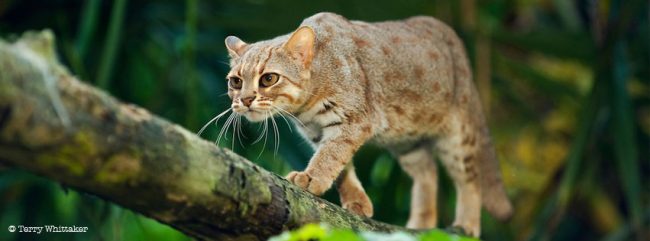
The Rusty-spotted cat might just be the smallest species of wild cat in the world. Image Credit: Terry Whittaker
While rusty-spotted cats have been observed in India and, more recently, in Nepal, the Prionailurus rubiginosus phillipsi subspecies of rusty-spotted cat is one that is endemic to Sri Lanka. Capable of growing up to just 19 inches in length, it rivals the African black-footed cat as the smallest wild cat in the world.
The rusty-spotted cat – referred to in Sinhalese as the “Kola Diviya” – lives in a range of habitats, from tropical forests, to scrub, and grassland, but has been observed as favouring dense vegetation and rocky areas that suit its diet of small rodents and birds. More recently, it has been sighted in small, isolated forest patches in the central highlands of the country, which are interspersed with tea estates. This opens up the possibility of the species adapting to habitats that are, traditionally, outside its comfort zone.
Due to declining population numbers resulting from threats in the form of habitat loss and direct human contact, the rusty-spotted cat was, in 2016, listed as “near threatened” in the IUCN Red List. It was, however, already considered “endangered” in the National Red List for 2012.
It must now be evident that the biggest of our wild cats has, quite unfairly, been commanding the lion’s – uh, leopard’s? – share of our attention over the years, both in terms of research and conservation. But with more and more attention being drawn to our island’s smaller feline inhabitants, the time is ripe for us, as Anya Ratnayaka says, to start appreciating the little guys, who, together with the leopard, make up the feline branch of Sri Lanka’s impressive biodiversity.
